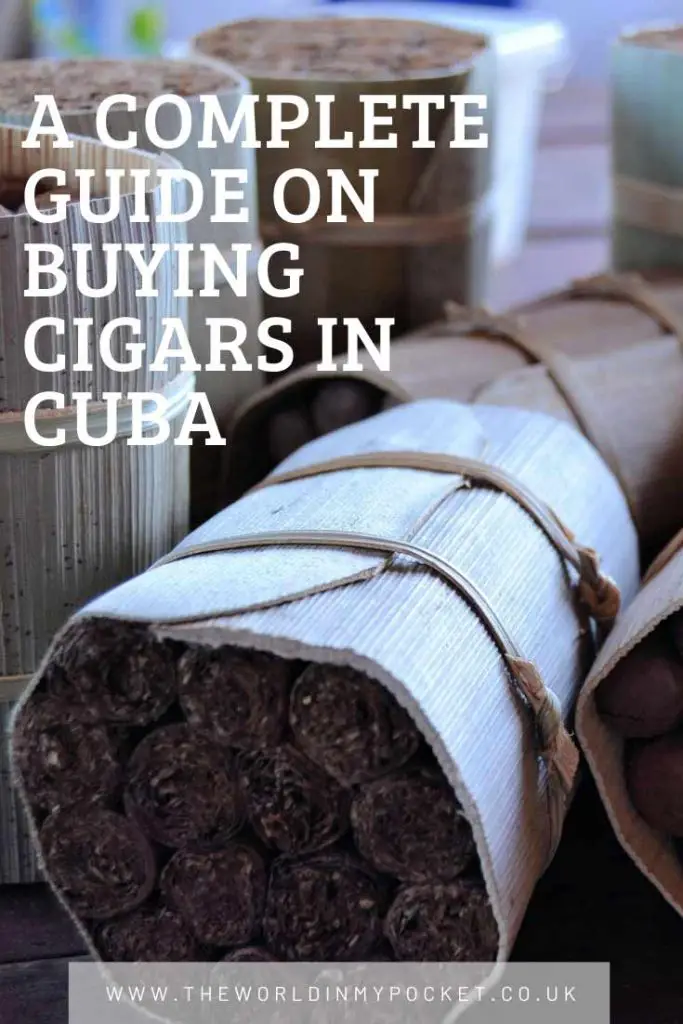
Some of the best cigars in the world come from Cuba. The island produces over 90 million cigars a year, which may make choosing the best Cuban cigars tricky. Purchasing an authentic stick at a good price takes a little research, but we’ve gotten you started with this article.
What Makes Cuban Cigars So Special?
Cuba is venerated for its cigars largely due to its traditions and the quality product born from that long history. The island’s climate allows it to grow quality tobacco for the filler, binder, and wrapper of a cigar. In this environment, a flavorful cigar with notes of sweet hay and earth is born. When lit, the leaves produce a thick grey ash that gives smokers an even, slow burn. A trip to Cuba is sure to be an amazing experience for anyone looking to immerse themselves in a vibrant culture; and it would be perfectly punctuated with a cigar purchase.
Buying a Best Seller

Just as you would plan your itinerary, your hotel, and your flight, you need to plan your shopping excursion. Start with knowing your own flavor profile and the best sellers in those categories.
Mild cigar smokers will enjoy the creamy flavor of Fonseca’s cigars. If a medium palette is your favorite, then Romeo Y Julieta has a large portfolio to explore. If you want to splurge, try a Cohiba Siglo VI. It consistently cracks the top 25 list for well-known cigar reviewers. Montecristo Platinum is a popular stick by a lauded brand. It was created specifically for smokers interested in a full-bodied cigar.
Authenticity
Cuban cigars are widely seen as a luxury item, like a designer handbag; and like designer bags, they are sometimes counterfeited. To make sure you’re purchasing be mindful of three things: location, brand and markings.
Location

Street-side markets are notorious for trying to pass off cheaply made cigars as authentic Cubans, so always buy from a reputable store. When in doubt, just buy from the distributor directly. Many farms have visitor’s centers and gift shops? Romeo Y Julieta and Partagas both have factory stores that are guaranteed to sell genuine Cubans.
If you try a cigar on your trip and want to buy more when you return home, a trusted online retailer can help you source your stogies.
Brand
You’re guaranteed to get a quality smoke if you stick to well-known names. Staple brands like Cohiba, H. Uppman, Punch and Hoyo de Monterey go to great lengths to ensure customers get the real thing. Smaller brands are much easier to copy and pass of as authentic.
Markings

Markings are one way big brands control quality. Check your bands for imperfections and check the barcode on your box to make sure it’s genuine.
Price Points
Once you’ve found a reputable store, check the prices. Just like with wine, overpaying for the product doesn’t make it taste any better. Some stores may overcharge tourists because they know visitors expect to pay more.
Generally, Cuban cigars cost less in Cuba—with starting prices around $10 or $11 USD. If you’re looking to purchase a box of something that’s not a special release still expect to pay $300 USD or more. Cohibas are a premium brand even on the island, so don’t expect any discounts or “steals.”
Deep discounts on brand names mean you may be looking at seconds. Seconds are cigars that didn’t make the cut because of a cosmetic flaw or other mistake. Below seconds are sticks rolled with leftovers that amount to little more than floor sweepings and damaged leaves. Remember: “If it’s too good to be true, it probably is.”
The Trip Home
Making sure you can pass customs without forfeiting your prize is important. If you are a U.S citizen, the general rule is no more than 100 cigars every 31 days and no reselling! If you intend to purchase more than 100 cigars, you’re subject to pay additional tax. If you intend to resell, you have to obtain special licensure.
Canadians can bring at most 50 cigars back without special declarations or additional fees. Be sure to check your country’s policies before going on a shopping spree.

Disclaimer: Some of the links one this website are “affiliate links.” This means that if you click on the link and do a purchase, I will receive an affiliate commission at no extra cost for you. This helps me keep my website running and continue to share my traveling knowledge with you. I thank you for booking your flights or hotels using the links on my website. Regardless, I only recommend products or services I use personally and believe will add value to my readers.

I am gonna show this to my husband! Thanks a lot for the detailed post
This was such a fun read. I love Cuban history, and Ybor City in Tampa is the only place similar I’ve been to. I would love to visit Cuba one day.
I never knew what made Cuban cigars different! Fascinating
That’s quite interesting and learned some new things about cigars. My husband and I don’t smoke but this would be great for people who do.
Wow, I had a few Burmese cigars recently. They were really good. Hope I go to Cuba someday.
Just like food, I think you should buy cigars that the local community likes.
This is the first I heard about cigars and I don’t smoke but read this article is such interesting especially to those people who love cigars